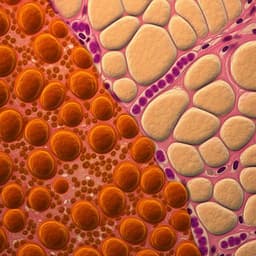
Medicine and Health
Senescent immune cells accumulation promotes brown adipose tissue dysfunction during aging
X. Feng, L. Wang, et al.
This groundbreaking study by Xu Feng and colleagues uncovers how age-related infiltration of pro-inflammatory S100A8+ immune cells compromises the function of brown adipose tissue (BAT). The researchers discovered that targeting these senescent immune cells could rejuvenate BAT and boost metabolic function in aged individuals. Don't miss out on this timely research that paves the way for future therapies against obesity and metabolic disorders!
Playback language: English
Related Publications
Explore these studies to deepen your understanding of the subject.







